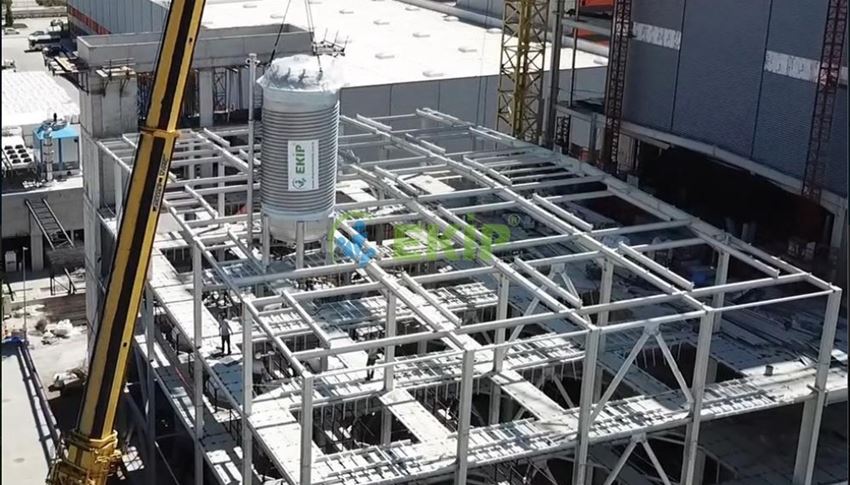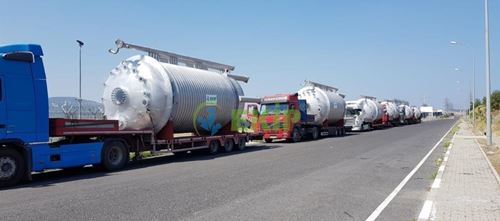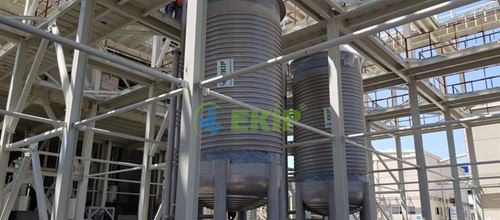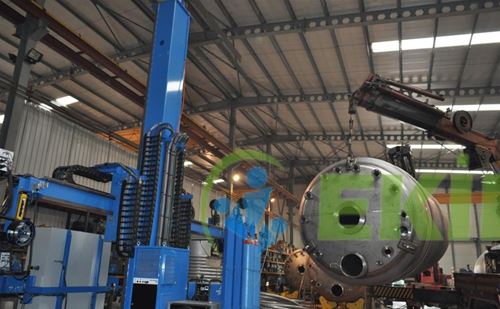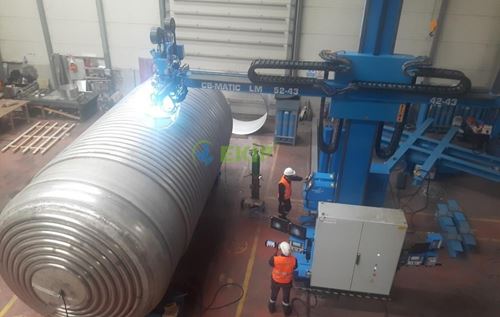EPS REACTOR
EPS REACTOR
Expandable Polystyrene is produced by the suspension polymerization method of Styrene Monomer by batch process. Styrene, organic inhibitors, demineralized water and various additives are discharged into reactors with agitators. Reactors are of various sizes. Suspended Styrene droplets polymerize and turn into Polystyrene. During the polymerization reaction, the reactors are kept under control by heating from time to time and cooling from time to time. Then pentane is added as blowing agent and absorbed into the particles. Thanks to the added auxiliary chemicals, the sizes and densities of EPS granules are adjusted. The reactor is emptied and the particles are taken into the washing tanks and sent to the dryer from there. In the centrifugal dryers, the water in the product is removed. Granules are taken to the silos after drying. They are dried a little more during this process. Then the granules are sent to the sieves to be separated according to their sizes. Granules separated according to their sizes are transferred to silos separately. Before packaging, a chemical surface coating is added to the granules in the silos to reduce friction during the expansion works. In packaging and drying processes, substances that reduce static electricity are added to the product. Thus, the consumer who will use the product is not met with the problem of static. During all processes, the product is worn from intermediate product to sample and it is examined in the laboratory to see if the processes continue successfully.
Sectors in which EPS Raw Material is Used; In the construction industry; In all structures where heat and sound insulation can be applied (insulation boards, roof coverings, insulated trapezoidal sheet construction, sound insulation, practical concrete molds, installation insulation etc.)
• In the packaging industry, food containers, food packaging, heat insulated cargo packaging, as a shock absorber,
• In air transportation, production of pallets, vegetable and fruit crates due to its weight advantage,
• In the automotive industry, in the filling of bumper materials with the purpose of increasing the impact resistance, in the construction of refrigerated vehicles due to its thermal insulation feature.
• In the medical sector, it can be listed as sterilized container making.
 English
English